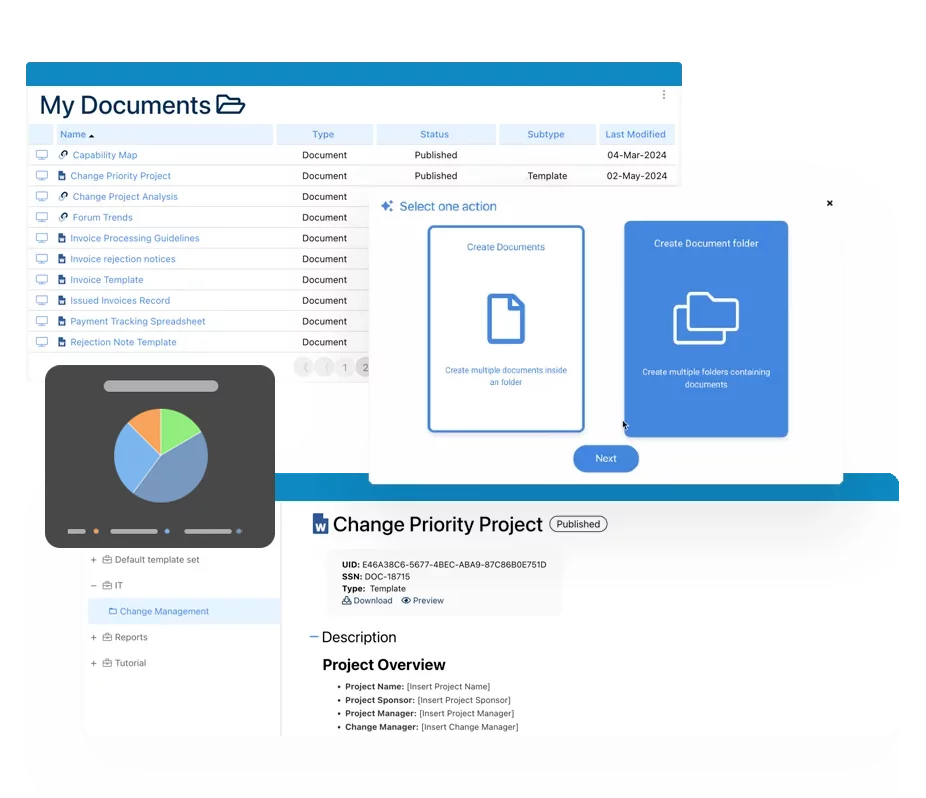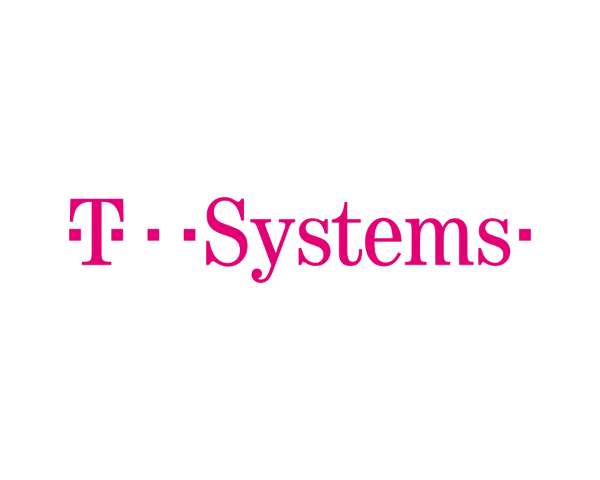- Business Process Management (BPM)Document Management System (DMS)Electronic Quality Management System (QMS)Risk, Governance & Compliance (GRC)Low Code Rapid Application Development (LC)Business Continuity Management (BCM)Enterprise Architecture (EA)Business Process Management (BPM)Document Management System (DMS)
- Document Control Overview
- AI Content Creation & Improvement
- Policy & Procedure Management (SOP)
- AI Content Mining Parser
- Collaboration & Governance
- Data Migration & Integration
- Interfacing Offline App
 Electronic Quality Management System (QMS)
Electronic Quality Management System (QMS)- Quality Management System Overview
- Document Control & Records Management
- Audit & Accreditation Management
- Corrective & Preventative Action
- Quality Event (Non-conformity / Complaint/ Compliance)
- Risk Management
- Incident Management
- Environmental Health & Safety
- Product & Supplier Management (SCAR)
- Training Management
- Control Management
- Action Items Management
- Management Review
- FMEA
- Pharmacovigilance
- Data Migration & Integration
 Risk, Governance & Compliance (GRC)
Risk, Governance & Compliance (GRC)- Risk, Governance & Compliance Overview
- Risk & Control Management
- Regulatory Compliance
- Collaboration & Governance
- Data Migration & Integration
- Interfacing Offline App
 Low Code Rapid Application Development (LC)
Low Code Rapid Application Development (LC)- Low Code Automation Platform Overview
- Electronic Web Form Design (eFORMS)
- Database Table Entity Designer
- System Integration Designer
- Design & Manage Tasks
- Design & Manage BPMS Apps
- Custom Rules/Guards/Actions
- Electronic Services
- User Homepage
- BAM (Business Activity Monitoring)
- Custom Dashboard Design
- Data Migration & Integration
 Business Continuity Management (BCM)
Business Continuity Management (BCM)- Business Continuity Management Overview
- Business Impact Analysis
- Disaster Recovery Simulation
- Action Item Management
- Mass Notification Management
- Asset Management
- Interfacing Offline App
 Enterprise Architecture (EA)
Enterprise Architecture (EA) - IndustriesRegulatory ComplianceUse CasesLearning CenterFramework & PracticesIndustries
- Healthcare
- Medical Device Technology
- Life Science, Pharmaceutical
- Aerospace & Defense
- Airlines and Aviation
- Media & Telecommunications
- Government and Military
- Technology
- Energy
- Logistics & Port Operations
- Banking & Capital Markets
- Retail & Consumer
- Consulting
- Education
- Engineering & Construction
- Manufacturing
- Financial Services
- Insurance
- Chemicals
Regulatory Compliance- Regulatory Compliance
- ISO
- ISO 9001 (guide)
- ISO 9001:2026 (preparation)
- ISO 17025
- ISO 27000
- ISO 27001
- ISO27002
- ISO 42001
- EU AI Act
- SOC 2 Type 1 & 2
- Sarbanes Oxley
- GxP
- GRC
- Basel
- Digital Signature
- GDPR
- IFRS
- NIST SP 800-53
 Use Cases
Use Cases- Quality Management System (QMS)
- Digital Transformation
- Continuous Improvement
- Governance, Risk & Compliance
- Knowledge Management
- System Deployment (ERP, CRM…)
 Learning CenterFramework & Practices
Learning CenterFramework & Practices - AboutCustomer SuccessPartners



Orange Business Services (OBS)
Please Select contact form.

Orange Business Services (OBS) is a global IT and communications services provider, with services worldwide. Their mission is to help companies collaborate effectively, operate efficiently, and engage better with their customers, by connecting their people, sites, and machines securely and reliably. More than two million businesses in France and 3,000 multinationals place their trust in them.
Supporting communications takes strong global processes, a seamless voice, and data network, and a qualified team that can serve across borders, languages, and diverse in-country infrastructures. They offer international know-how combined with an unmatched geographical footprint.
Challenges
Currently, Orange has dispersed teams of experts (known internally as Service Life Managers – SLM and Service Implementation Managers – SIE) within the department of customer support and operations. This department globally represents 6000 employees serving over 5000 customers across France, Delhi, Cairo, and other
Orange currently does have a documented process manual for product deployments. It includes a complex RACI whereby all the roles related to tasks are identified. It is used by the SIE’s as reference to extract the generic responsibilities when initiating a project (launch of a product/ service). It then becomes the responsibility of the SIE to define the work instructions and associated teams responsible to deploy the particular product (with the assistance of engineering and IT). Each product deployment requires analysis of the particular requirements and construction of a unique set of tasks/ processes to properly deliver. It is very difficult to achieve consistency, standardization and re-use in the existing manual environment. As well, it is impossible to gain a consolidated global view of the work-in-progress and bottlenecks. If a best practice is developed it is very difficult to propagate across other product deployments. On average the teams need to deliver 800 products/ services per year.
Goals and Objectives of the Project
A team was formed consisting of SIE-SLM experts from across the disciplines and spread across geographic regions (France, India, Cairo) to launch a project named “Design for Re-use” (D4R). The objective was to define within a central repository, pre-defined key reusable portions of processes that can be made to come together into a unified work process (representing the key process value chains for Orange: Order, Deliver, Customer Support & Invoicing) to deliver its products. Once in place, this central repository of best practices will become shared by all the SIE-SLM’s (representing approximately 200 process conceptualizers). The team envisioned the use of an advanced BPM software to achieve these goals.
Market Analysis
The team assembled a list of key requirements prior to conducting the market analysis. The key features identified in the requirement document were:
- BPMN 2.0 compatibility with easy and intuitive navigation/ drag and drop
- Information stored in a central re-usable library of objects with the ability to re-use objects multiple times within one or many processes
- Web access to published content without the need for a client software, using defined role profiles to control access including simple and intuitive search capability (Key words and full text search)
- Version control (WIP, Published, for review) as well as audit trail of previous versions and other processes (differences)
- Ability to share processes using unique URL’s
- Ability to export processes at any level to different formats (Word, Excel, BPMN)
- Security control capabilities on any object and use of groups and profiles
- Collaborative capabilities to permit discussions, improvement requests, questions etc. on published content
- Multi-language capability (multiple simultaneous languages supported)
With that list of requirements the team conducted a cross-market study of some key suppliers in the BPM market (from Europe, United Stated and Canada). They made use of a scoring matrix to evaluate each supplier and render an overall score based on the listed requirements. Interfacing was asked to demo several times until the team made their final selection. Interfacing (Enterprise Process Center – EPC) was selected due to its ability to meet all of the listed requirements.
Deployment
The Orange D4R team knew all along that no matter how good the selected platform was, and how solid the associated methodologies were, without a careful planning of the deployment the project may not be successful.
The introduction and deployment of the platform has been planned over phases, along with well-designed and focused training and coaching sessions led by the EPC professional services team.
The first phase of the deployment was launched in March 2016 with the installation of EPC followed by a 3 day intensive training session at Orange Business Services offices in Rennes, France. The training was tailored to the project’s needs and led by an EPC professional. It followed a workshop format in which training attendees were continuously engaged in EPC, building processes and learning the features. Most material used were from Orange’s own processes. The workshops also covered methodologies to determine the frameworks to be used.
At the end of the training, all team members were confident of the capabilities of EPC and that, as some of them said, “EPC was the tool that answered best the project’s needs and requirements”.
After the initial training, the core team set out to model the various key processes and test the applicability of EPC for their needs. Several key functions where tested during this phase:
- Use of Processes/ sub-processes/ process references and shortcuts/ IPLs
- Linking EPC to internal tools for viewing published content
- Enabling multi-langual process deployment
- Preparing deployment plans for January 2017 and training material for all usersInstalled the latest release of EPC (V9.7.2) as well as the Cognos reporting function
In the next phases of the deployment, the team started by finalizing the framework design and start building their processes in EPC. The team conducted additional training sessions internally to train additional process modelers and to start training end users on performing their processes using EPC.
Interfacing will continue supporting the team in their journey towards achieving the project’s goal. To that end, weekly reviews and conference calls have been scheduled between the team and the EPC professional.
Next Steps
As Interfacing is preparing the launch a new major upgrade of it’s software (V10 – support for BPMN 2.0), Orange has volunteered to be our Beta tester for the initial release of the product in the December, January 2016 time frame. Orange plans to deploy at large after this using the latest in BPMN 2.0 representation.
Project summary, Challenges and Critical Success Factors
The Orange D4R team knew all along that no matter how good the selected platform was, and how solid the associated methodologies were, without a careful planning of the deployment the project may not be successful.
The introduction and deployment of the platform has been planned over phases, along with well-designed and focused training and coaching sessions led by the EPC professional services team.
The first phase of the deployment was launched in March 2016 with the installation of EPC followed by a 3 day intensive training session at Orange Business Services offices in Rennes, France. The training was tailored to the project’s needs and led by an EPC professional. It followed a workshop format in which training attendees were continuously engaged in EPC, building processes and learning the features. Most material used were from Orange’s own processes. The workshops also covered methodologies to determine the frameworks to be used.
At the end of the training, all team members were confident of the capabilities of EPC and that, as some of them said, “EPC was the tool that answered best the project’s needs and requirements”.
After the initial training, the core team set out to model the various key processes and test the applicability of EPC for their needs. Several key functions where tested during this phase:
- Use of Processes/ sub-processes/ process references and shortcuts/ IPLs
- Linking EPC to internal tools for viewing published content
- Enabling multi-langual process deployment
- Preparing deployment plans for January 2017 and training material for all usersInstalled the latest release of EPC (V9.7.2) as well as the Cognos reporting function
In the next phases of the deployment, the team started by finalizing the framework design and start building their processes in EPC. The team conducted additional training sessions internally to train additional process modelers and to start training end users on performing their processes using EPC.
Interfacing will continue supporting the team in their journey towards achieving the project’s goal. To that end, weekly reviews and conference calls have been scheduled between the team and the EPC professional.
Why Choose Interfacing?
With over two decades of AI, Quality, Process, and Compliance software expertise, Interfacing continues to be a leader in the industry. To-date, it has served over 500+ world-class enterprises and management consulting firms from all industries and sectors. We continue to provide digital, cloud & AI solutions that enable organizations to enhance, control and streamline their processes while easing the burden of regulatory compliance and quality management programs.
To explore further or discuss how Interfacing can assist your organization, please complete the form below.

Documentation: Driving Transformation, Governance and Control
• Gain real-time, comprehensive insights into your operations.
• Improve governance, efficiency, and compliance.
• Ensure seamless alignment with regulatory standards.

eQMS: Automating Quality & Compliance Workflows & Reporting
• Simplify quality management with automated workflows and monitoring.
• Streamline CAPA, supplier audits, training and related workflows.
• Turn documentation into actionable insights for Quality 4.0

Low-Code Rapid Application Development: Accelerating Digital Transformation
• Build custom, scalable applications swiftly
• Reducing development time and cost
• Adapt faster and stay agile in the face of
evolving customer and business needs.
AI to Transform your Business!
The AI-powered tools are designed to streamline operations, enhance compliance, and drive sustainable growth. Check out how AI can:
• Respond to employee inquiries
• Transform videos into processes
• Assess regulatory impact & process improvements
• Generate forms, processes, risks, regulations, KPIs & more
• Parse regulatory standards into requirements

Request Free Demo
Document, analyze, improve, digitize and monitor your business processes, risks, regulatory requirements and performance indicators within Interfacing’s Digital Twin integrated management system the Enterprise Process Center®!
Trusted by Customers Worldwide!
More than 400+ world-class enterprises and management consulting firms


























































